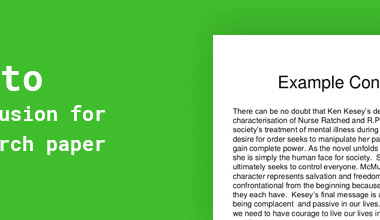You have this fantastic project idea. The more you learn about it, the more convinced you are that it is something worth investing time and money in. It has the potential to be a game-changer, and if all goes as planned, the result will be a tremendous win for the company, if not for the entire industry. But, there is a problem. And, it is how to write a project proposal right?
You’re here wondering how you can persuade the company’s decision-makers to support your concept. It represents the short answer in this article on how to write a strong project proposal.
What is a Project Proposal?
A project proposal is a document that lays out all the things stakeholders have to know in order to get started on a project. It’s an important first step toward getting a project started.
Typically, you choose a project proposal during the project intake phase. A well-written project proposal actually both informs and persuades, and it combines project management capabilities with a few other essential talents, such as research, data analysis, and some copywriting.
It adheres to standard proposal formats, which comprise the following components:
#1. Summary of the Report
The executive summary is essentially the project’s elevator pitch, being brief and to the point.
It clearly explains the problem, discusses how your proposed project plans to solve the problem and defines what makes up a successful project.
#2. History or Background Information
This part discusses both successful and unsuccessful former initiatives, as well as how the latter could have been handled better, with the purpose of demonstrating how the current project will be more successful because of previous lessons learned.
#3. Requirements
This section explains what they require throughout the project life cycle in terms of resources, tools, the project timetable and so on.
#4. Solution
The solution section discusses how you intend to approach and complete the job. It walks you through the project management stages, tactics, and skills you’ll need to get things done faster, as well as how to deal with complications.
#5. Authorization
This section identifies the decision-makers for the project and the stakeholders who have been allowed by the client to make approval/sign-off decisions.
#6. Appendix
Any information not included in the proposal itself, such as materials and resources that team members and stakeholders can use to learn more about the project, should be included in the appendix.
If you’re not sure where to begin, several of the top project management software packages include project proposal templates in their tool collection that you may use for free.
What are the Things to Consider Before Writing a Proposal for a Project?
There are a few things to think about before you sit down and start drafting your project proposal overview, including:
#1. Your target market
Determine who the decision-makers are and what their relationships are.
Each stakeholder will have his or her own set of objectives and preferences. This depends on your target audience. You may have to write many versions of the proposal.
What level of familiarity do they have with the project or problem? What do they know already? Also, what do they not understand?
- Is it necessary to provide background information on a specific topic?
- What do you think they’d want to hear?
- Is there a specific approach to help them comprehend what you’re trying to say?
Jargon and technical terminology, for example, are likely to be expected if the proposal is for the head of the technology department.
If you’re trying to persuade a small business owner, use straightforward, easy-to-understand language, and make the proposal focus on the project’s positive influence on the company’s bottom line.
#2. Pitfalls to avoid
Francis McNamara lists four key reasons they reject project proposals in a paper presented at the Project Management Institute (PMI) Global Congress.
#3. Proposal that is not well outlined
Proposal is not in line with the organization’s objectives.
Benefits of the project are not clearly and credibly defined.
Presentation of a project proposal that is ineffective
In essence, some ideas are rejected not because they are terrible proposals in and of themselves, but because the proposal was unclear and unpersuasive.
Information and research
To substantiate your proposal and justify the project’s existence, you’ll need data, statistics, graphs, and charts.
You’ll have as much real data, facts, and examples as you can supply to construct a convincing proposal, so look into previous initiatives, both successful and unsuccessful.
What Are The Steps To Writing A Project Proposal?
Keep in mind that the purpose of preparing a proposal is to gain executive support. You want influential people to back your project. To make a vision a reality, you’ll need decision-makers on your side.
You want them to be moved by the proposal and then take the next step, which is to approve the project.
Step One: Identify The Issue
What is the problem that your project is attempting to solve? What exactly is the issue? Why is it important to solve it? Make your audience perceive the issue the same way you do.
Tips for defining the issue include:
- Begin with a bang. Because decision-makers rarely have a lot of time to review a proposal, ensure you articulate concisely the pain issue and in a way that they understand.
- Facts, not opinions, should be used. You don’t want to exaggerate, even if you want your audience to realize the gravity of a problem. Instead, support your claims with evidence from your research.
Step Two: Describe Your Solution.
What is your plan for resolving the issue with your project? Why is your solution superior to others that are similar? Discuss why alternative options will not work in this case.
Tips for presenting your solution include:
- Prepare for criticisms and inquiries. Prepare to defend your solution from every viewpoint. Besides that, prepare to explain why, for example, your more expensive solution is better than a less expensive one.
- Demonstrate the solution’s broader influence. Stakeholders are often more enthusiastic about projects that have a broad impact than those that have a narrow influence.
- Once again, facts trump opinion. Please give as many research-based examples as possible.
Step Three: Create A List Of Deliverables And Success Criteria.
This section depicts the deliverable’s functions and attributes, as well as how to determine whether the project was successful.
Tips for defining deliverables include:
- Include a deadline for delivery.
- If you’re proposing a customer service project, then you define what your project will produce and what users may expect from it, such as a cloud-based phone system that’s accessible 24/7 from anywhere. Also, mention when you expect to finish every deliverable.
- You must come up with a SMART solution. The project’s success will be determined by your success criteria. Keep your solution SMART at all times (specific, measurable, achievable, realistic, and time-bound.)
Step Four: Describe your strategy or approach.
This is the most important element of the proposal, because it explains how to meet the project’s goals. It begins with a description of the strategy and of why it is useful. It also explains how to deal with issues.
Planning advice:
- Introduce the project’s objectives.
- Will you follow the standard waterfall methodology?
- Why?
- Will you hire outside contractors, in-house employees, or consultants?
- What are their goals and responsibilities going to be?
This is your chance to talk about the “why” behind the decisions you’re making to finish the project.
Describe how issues will be resolved. This clarifies the risk mitigation measures in your project management plan.
Step Five: Make A Schedule And A Budget For Yourself
This is where you break down project expenditures and explain how you’ll achieve deadlines.
Tips for establishing a timetable and budget include:
- Give as much information as you can. You can divide your budget into areas like supplies, tools, wages, and so on. Include all indirect and overhead expenditures. A detailed financial breakdown will show stakeholders you’ve done your homework and won’t be squandering their funds. They may require financial statements and funding sources for some projects.
- Be specific. Don’t make an educated estimate. Provide project start and completion dates, as well as whether specific components of the project may be completed at the same time.
Read Also: What Does A High School Diploma Or Equivalent Mean?
Step Six: Bring Everything Together.
You may finish your proposal with a conclusion that sums up the problem, solution, and advantages in a few sentences. Make your proposal the best by restating the necessary concepts or data you want your audience to remember.
Examine your proposal for consistency of thought and to see if the pieces work together.
Tie things together using these tips:
- You should write your proposal in the style of a book. Your proposal should contain a narrative. To produce a unified whole, every form and element must operate together.
- Bring nothing in that doesn’t belong. Make sure you introduce nothing that seems out of place or doesn’t contribute to the project’s overall goals.
- Make sure that all the components of the project proposal are included. Check your document to make sure it contains all the elements.
Step Seven: Proofread and edit your proposal
Rewrite your idea as needed to make it more engaging, useful, clear, and convincing. Request comments and make sure the proposal is well-organized and pleasing to the eye.
Editing advice:
Examine the tone and language used. If you’re writing a proposal for a certain audience, make sure the tone and words you choose reflect that. Don’t forget to check for errors in grammar, punctuation, and spelling. You want your proposal to come across as professional as possible.
Should You Use Project Management Software For Project Proposal?
A project proposal is a project and hence can benefit from a project management software.
Software is an important part of current project management fundamentals, with advantages such as:
The collaboration will be easier. Good project proposals take time to develop and are frequently the result of a collaborative effort. The collaboration will be easier with the use of good project management software, especially when teams are in different regions of the world.
Workroom that is centralized. If the proposal is for a large, complex project, you’ll need a lot of data and research to make a persuasive business case.
Having all the information you require in one location saves everyone the time and effort of searching for files and papers in multiple locations. A centralized project workroom guarantees that everyone has access to all updates, notes, and documents related to the project.
All of your communication is in one spot. Physical gatherings will be difficult, if not impossible, to organize, especially if people are geographically distant.
Most project management software includes communication tools, such as phone and audio conferencing, group chat, private messaging, comments, activity streaming, and presence. Those that don’t provide them can easily integrate with other communication tools with a few clicks.
Accessible at all times of the day and night. If you need to change the proposal at home or want to double-check it before sending it to decision-makers, saving a copy in your project management software assures you have the most recent version and that you can change it, from anywhere.
What Are The Types Of Proposals We Have?
#1. Solicited Proposals
Proposals submitted in response to a sponsor’s special request. Such solicitations, which are commonly referred to as Request for Proposals (RFP) or Request for Quotations (RFQ), normally contain specified format and technical content requirements, as well as award terms and conditions. BAAs (Broad Agency Announcements) are not official solicitations.
#2. Unsolicited Proposals
Proposals are made to a sponsor who has not published a specific solicitation but is thought to be interested in the subject by the investigator.
Related Article: What is a Minor in College? And does it matter?
#3. Preproposals
A sponsor may request them if they want to reduce an applicant’s time spent developing a full proposal. They commonly use a letter of intent or a brief abstract as a pre-proposal.
After reviewing the pre-proposal, the sponsor informs the investigator whether they require a full proposal.
#4. Continuation Or Non-competing Proposals
These documents confirm the original plan and financial requirements of a multi-year project for which the sponsor has already granted early funding (normally one year).
The availability of finances and sufficient work progress are usually prerequisites for continued help.
#5. Renewal Or A Competing Proposals
Proposals that ask for continued funding for a project that is about to cease. From the sponsor’s perspective, these inquiries have the same status as an unsolicited proposal.
What should the project proposal include?
The aims and vision of the project; there are also major deliverables, timeframe, and ownership, ought to be all addressed in the proposal.
You can also highlight major risks and challenges, success criteria, and reporting information. They should include the expected budget and estimated financial impact after completion in the project financials.
Frequently Asked Questions (FAQs)
Even though proposals of 10 to 20 pages are normal, some donors prefer short idea notes, while others, such as USAID and the European Commission, can seek extensive proposals of 50 pages or more.
The average length of a research proposal is roughly 2,500 words, but there is no upper or lower restriction. The first step in writing a research proposal is to determine what you want to learn more about.
The proposal assignment in technical writing the course allows you to present an idea to a specific, named audience about a concept you have to improve a certain aspect of that company, organization, centre, or other business.
The fact remains that the purpose, aims, precise objectives, technique, and expected impact of the project should all be contained. The objectives have to be presented in measurable terms, and they must be explicit and compatible with the statement of need and the proposed project’s purpose.
Conclusion
Your proposal’s effectiveness and persuasiveness will determine whether they will approve your project.
Decision-makers are unlikely to devote a significant amount of time to evaluating your concept in order to determine whether it is viable. As a result, it’s critical that your proposal grabs their attention right away, gets them enthused about the idea, and motivates them to take action.





